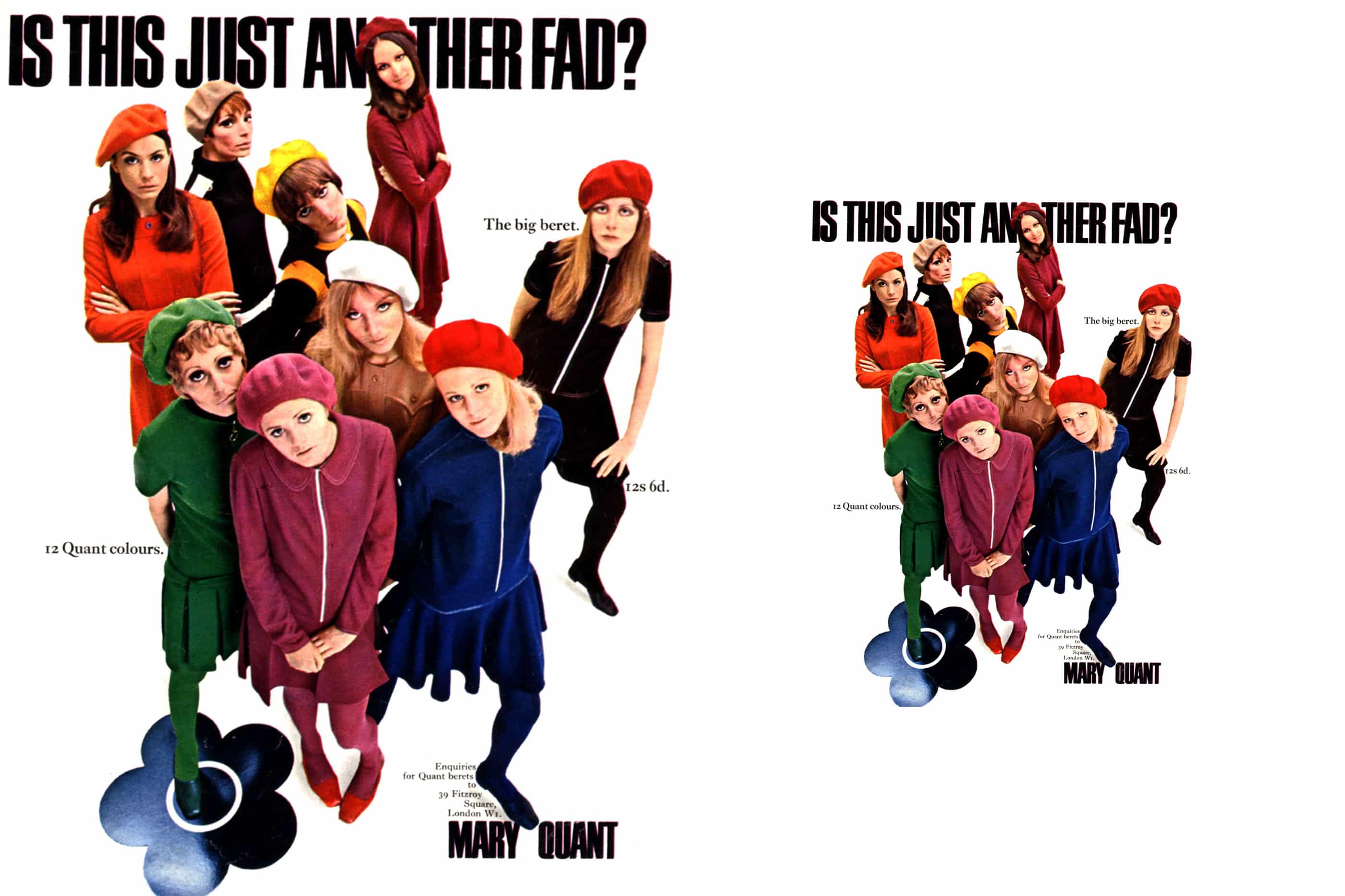
"Good taste is death; vulgarity is life."
— Mary Quant
You may not instantly recognise the name Mary Quant, but it's nearly impossible to overstate her influence and revolutionary approach to fashion. The visionary designer passed away "peacefully at home" in Surrey, southern England, on Thursday, according to family. She was 93.
Quant's is a name widely associated with the popularisation (perhaps even the invention) of mini skirts and hot pants – wardrobe staples of Swinging Sixties fashion, oft paired with the notorious go-go boot. Always ahead of her time, Quant was pioneering in every sense of the word – right down to her short, coiffed haircut that spawned a decade-long obsession with the sharp Vidal Sassoon bob.
Raised in South London in the 1930s, Quant was creative from an early age, studying illustration and art education at Goldsmith's College before getting her eponymous fashion label off the ground. She went on to set up a 'Bazaar' boutique on Chelsea’s King’s Road in the late 50s that would quickly become the fashionable epicentre of London.
In post-war England, Quant's designs were the epitome of style, capitalising on the nation's "youthquake", and marketing herself to a younger, carefree audience of women keen to turn their backs on the nipped and corseted silhouettes of their mothers, and who dared to take their hemlines higher. Her simple, mix-and-match garments set themselves apart, adopting daring bold colours and elements of whimsy and playfulness not otherwise popular at the time. Quant preferenced short flared skirts and pinafores, knee socks and tights. A cultural hangout for Mods and design curios alike, Quant's 'Bazaar' was a favourite amongst 60s fashion mavens, counting Twiggy and Pattie Boyd as fans.
Quant remained at the helm of her company until 2000, but there are as many as 200 of her stores in the UK. Her legacy is not simply in the hoisting of hemlines, but in the subsequent liberation of a generation of young women, spawned from that simple act. She offered them deliverance from their binding, stuffy expectations, in the form of a pop coloured micro garment. In Quant's own words, "I saw no reason why childhood shouldn’t last forever. So I created clothes that worked and moved and allowed people to run, to jump, to leap, to retain their precious freedom."
Image: one.



